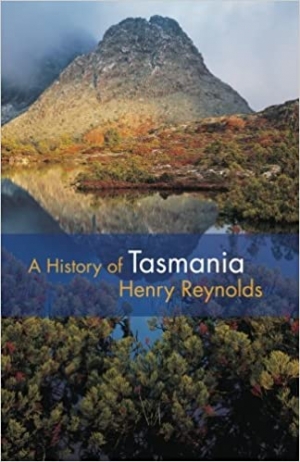Cambridge University Press
Nothing ever gets taken out of the Oxford English Dictionary (OED) – at least, that’s what I believed until I read this book. Words which are no longer used simply stay where they are, complete with their quotations, and the addition of a small dagger symbol (†) to signify their obsolescence: for example, †devouress (defined in 1895 as ‘a female devourer’), whose earliest known use was in John Wycliffe’s 1382 translation of the Bible, and whose most recent known use was in a 1611 dictionary of the Italian and English tongues. So it was shocking to discover that OED editor Robert Burchfield removed a considerable number of words from the four supplementary volumes of the dictionary, the first of which appeared in 1972.
... (read more)Alexander Howard reviews 'The Cambridge Companion to American Poetry Since 1945' edited by Jennifer Ashton
The scene: a cold, bright January day in the snow-covered capital of the United States. The occasion: the presidential inauguration of John F. Kennedy. Up to the podium steps America’s unofficial poet laureate, eighty-six-year-old Robert Frost. Temporarily blinded by the glare of brilliant sunshine and freshly fallen snow, Frost sets aside the handwritten text of his specially prepared ‘Dedication’ and recites from memory a much earlier poem, ‘The Gift Outright’.
... (read more)Don Aitkin reviews 'A Short Introduction to Climate Change' by Tony Eggleton
Wikipedia lists fifty-three books that are currently available on the subject of climate change, and this new book will make fifty-four. Such books fall into one of two groups: they either support the orthodoxy or dissent from it. Tony Eggleton’s book is one that supports it. It is well written, clear in its argument, quite even-handed, and comprehensive. I enjoyed reading it, even though I have my criticisms. Why do I criticise? Because I am a dissenter.
... (read more)Gerard Vaughan reviews 'The Encyclopedia of Australian Architecture' edited by Philip Goad and Julie Willis
This is an impressive publication, a massive tome with high gloss pages, beautifully designed with the highest production values, lavishly illustrated, with entries provided (on my count) by 229 separate contributors. This monumental collective effort makes a defining contribution to the study and documentation of architecture in this country, and to Australian architectural history. It is astonishing in its breadth, and gives us for the first time as near to a complete understanding of the trajectory of architectural ideas and practice in this country as is possible. Put simply, we have never before had so much information instantly available in a condensed form.
... (read more)N.A.J. Taylor reviews 'The Problem of Harm in World Politics: Theoretical Investigations' by Andrew Linklater
Violent and non-violent harm is endured, inflicted, and internalised by all people at different times, and to varying degrees. It was Cicero who is believed to have first posited that the main obligation human beings have is to refrain from harming one another, and that any unnecessary act of doing so renders that person an enemy of the human race.
... (read more)Michael Morley reviews 'The Letters of Samuel Beckett, Volume II: 1941–1956' edited by George Craig et al.
In a 2009 interview linked to his production of Endgame in which he played Clov, the actor–director Simon McBurney observed that ‘nearly all theatre colleagues I meet have a Beckett story’. My own (second-hand) favourite Beckett story, told me by the Brecht scholar and former deputy editor of the Times Literary Supplement John Willett, might seem too drolly apposite to be true: but he assured me that it was.
... (read more)Andrew Sayers reviews 'The Cambridge Companion to Australian Art' edited by Jaynie Anderson
Bernard Smith, who died in September 2011, was responsible for creating the first orthodoxy in Australian art history. His version of the story of Australian art has been persuasive and enduring. It held sway for half a century; in many ways we are still living with it. Smith’s classic account of the development of Australian art was Australian Painting, first published in 1962 and reprinted with updates in 1971, 1991, and 2001.
... (read more)Henry Reynolds is the pre-eminent historian of Aboriginal–settler relations in Australia, and with this theme he begins his history of Tasmania. He eschews the obligatory set piece description of Aboriginal society before the Europeans arrived, with which so many books now awkwardly commence ...
... (read more)James McNamara reviews 'The Letters of Ernest Hemingway: 1907–1922' edited by Sandra Spanier and Robert W. Trogdon
There is an entertaining moment in Woody Allen’s new film when the protagonist, Gil Pender, meets young Ernest in a bar. ‘You liked my book?’ Hemingway asks. ‘Liked? I loved all your work!’ gushes the time-travelling Pender. Hemingway looks chuffed and then proclaims his aesthetic.
... (read more)Alison Broinowski reviews 'David P. Forsythe: The Politics of Prisoner Abuse' by David P. Forsythe
Many of us would find it as hard as Shaw’s Ladvenu does to think of any good reason for torture. It seems medieval, it is abhorrent, it is internationally illegal, and it doesn’t work. Statements made under torture are legally useless, and their value as intelligence is not much better ...
... (read more)









